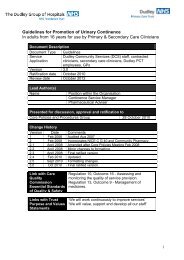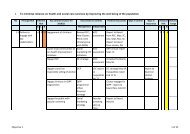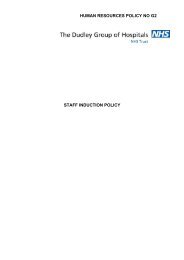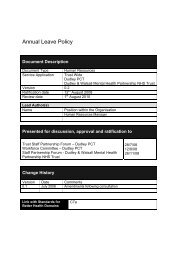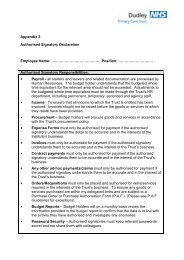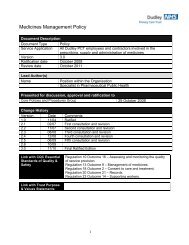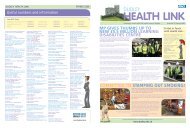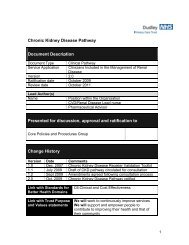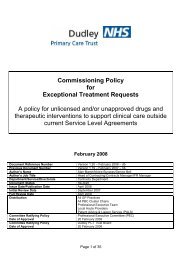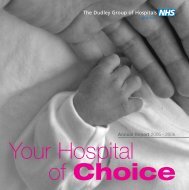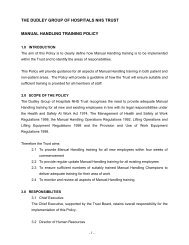Dudley Strategy for Tackling Health Inequalities 2010-15
Dudley Strategy for Tackling Health Inequalities 2010-15
Dudley Strategy for Tackling Health Inequalities 2010-15
- No tags were found...
You also want an ePaper? Increase the reach of your titles
YUMPU automatically turns print PDFs into web optimized ePapers that Google loves.
What are the gaps/where are we goingSources of inequality in cancer survival and mortality in <strong>Dudley</strong> include:Awareness and attitude to lifestyle risk factors <strong>for</strong> cancerAwareness of the early signs and symptoms of cancerUptake of prevention, screening and primary care servicesAccess to diagnostic and treatment services from primary careAccess to diagnostic and treatment services in secondary careProvision of in<strong>for</strong>mation and supportAccess to high quality end of life care <strong>for</strong> all people approaching end oflifeCancer awareness measures show that awareness of cancer symptoms is lower inmen, younger people, lower socio-economic groups and ethnic minority groups(University College London, 2009).Screening uptake <strong>for</strong> bowel cancer is lower <strong>for</strong> men and uptake <strong>for</strong> breast andcervical cancer screening is very close to the national targets of 80%.Primary care audit (Eden and Davies, <strong>2010</strong>) reveals late presentation with symptomsto primary care and delays in diagnosis and referral in primary care.<strong>Tackling</strong> inequalities requires a real commitment to reducing inequalities in cancer byfocusing on 1 year survival rates <strong>for</strong> all ages. A 1 year indicator would shift attentionto the vital first year after cancer is suspected, provide impetus to raise awareness ofearly symptoms of cancer, promote early presentation and diagnosis and speed upthe referral system.Key actions to reduce cancer inequalities:Promote healthier lifestylesRaise awareness of cancer signs symptoms and increase the uptake ofscreening programmesReduce cancer waits <strong>for</strong> all patientsEnhance quality and timeliness of in<strong>for</strong>mationProvide financial and psychological supportThe majority of health in<strong>for</strong>mation is text based. Letters, leaflets, and websites aresometimes produced in small print and written in complex language that people canfind difficult to understand. Research suggests that one in six patient in<strong>for</strong>mationleaflets produced by hospices and palliative care units can only be read by 40 percent of the population, and that only 30 per cent of GPs surgeries have accessiblein<strong>for</strong>mation <strong>for</strong> people with learning disabilities. A key factor in the low take up offinancial benefits is a lack of in<strong>for</strong>mation. Research indicates that around threequarters of cancer patients report not being given benefits in<strong>for</strong>mation by anyone. Athird of cancer patients – likely to be those most in need and least able to getin<strong>for</strong>mation themselves – stated that they would have liked such advice.132




